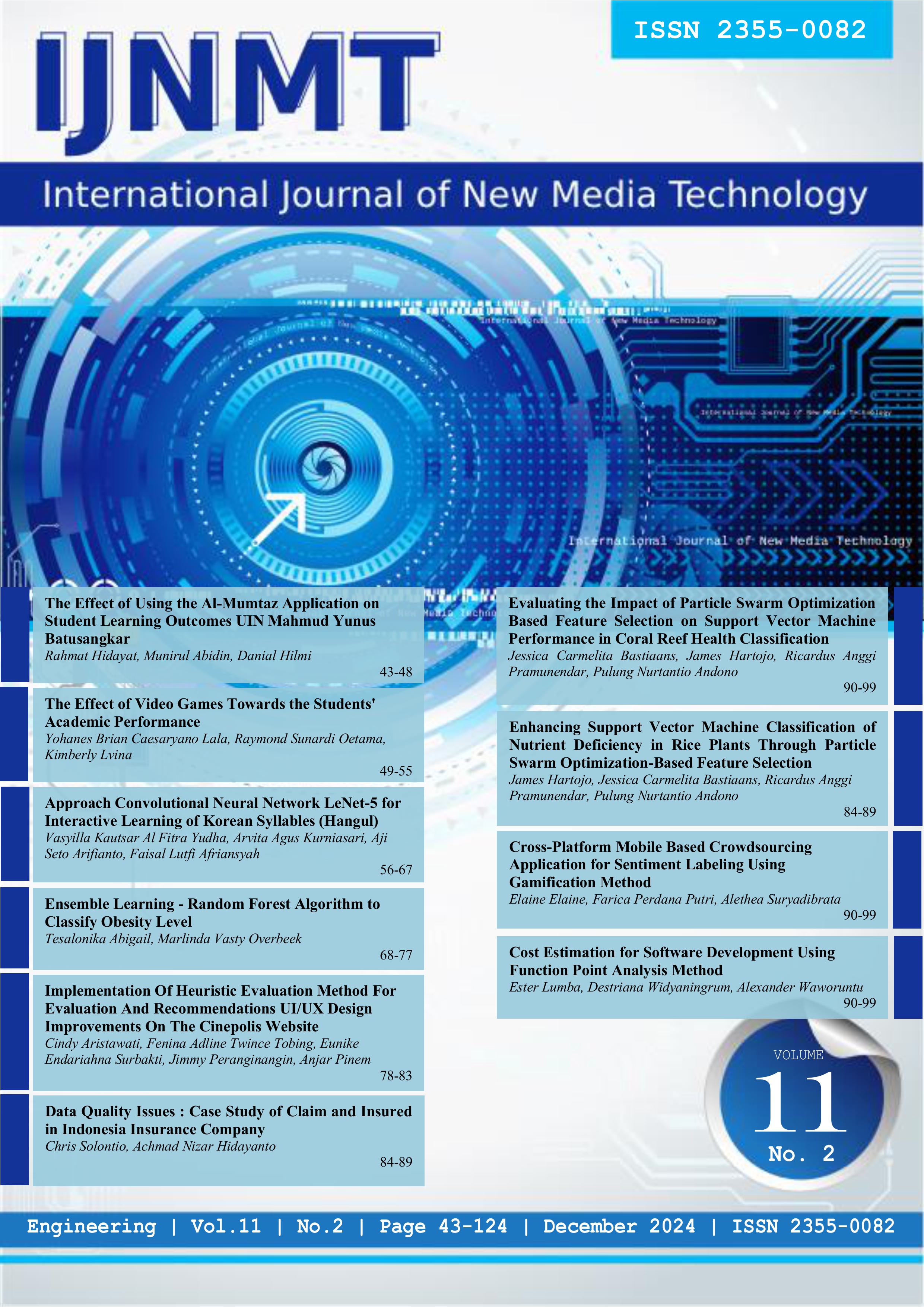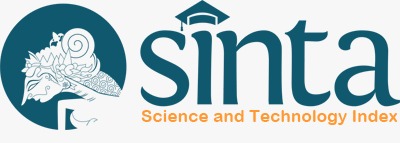Evaluating the Impact of Particle Swarm Optimization Based Feature Selection on Support Vector Machine Performance in Coral Reef Health Classification
DOI:
https://doi.org/10.31937/ijnmt.v11i2.3761Abstract
This research explores improving coral reef image classification accuracy by combining Histogram of Oriented Gradients (HOG) feature extraction, image classification with Support Vector Machine (SVM), and feature selection with Particle Swarm Optimization (PSO). Given the ecological importance of coral reefs and the threats they face, accurate classification of coral reef health is essential for conservation efforts. This study used healthy, whitish, and dead coral reef datasets divided into training, validation, and test data. The proposed approach successfully improved the classification accuracy significantly, reaching 85.44% with the SVM model optimized by PSO, compared to 79.11% in the original SVM model. PSO not only improves accuracy but also reduces running time, demonstrating its effectiveness and computational efficiency. The results of this study highlight the potential of PSO in optimizing machine learning models, especially in complex image classification tasks. While the results obtained are promising, the study acknowledges several limitations, including the need for further validation with larger and more diverse datasets to ensure model robustness and generalizability. This research contributes to the field of marine ecology by providing a more accurate and efficient coral reef classification method, which can be applied to other image classifications.
Downloads
Downloads
Published
How to Cite
Issue
Section
License
Authors retain copyright and grant the journal right of first publication with the work simultaneously licensed under a Creative Commons Attribution-ShareAlike International License (CC-BY-SA 4.0) that allows others to share the work with an acknowledgement of the work's authorship and initial publication in this journal.
Authors are able to enter into separate, additional contractual arrangements for the non-exclusive distribution of the journal's published version of the work (e.g., post it to an institutional repository or publish it in a book), with an acknowledgement of its initial publication in this journal.
Copyright without Restrictions
The journal allows the author(s) to hold the copyright without restrictions and will retain publishing rights without restrictions.
The submitted papers are assumed to contain no proprietary material unprotected by patent or patent application; responsibility for technical content and for protection of proprietary material rests solely with the author(s) and their organizations and is not the responsibility of the IJNMT or its Editorial Staff. The main (first/corresponding) author is responsible for ensuring that the article has been seen and approved by all the other authors. It is the responsibility of the author to obtain all necessary copyright release permissions for the use of any copyrighted materials in the manuscript prior to the submission.















